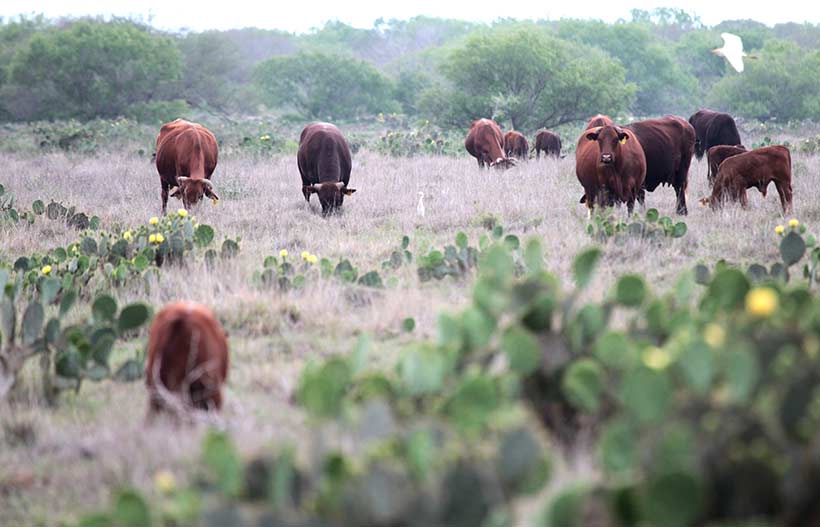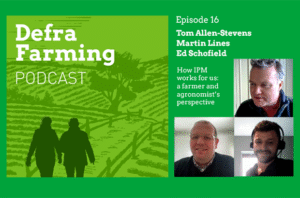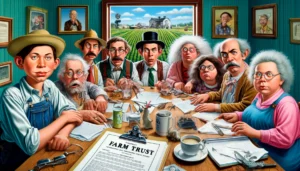
cattle ranch 1.jpg
Cattle Ranch
Definition:
A cattle ranch, also known as a cattle station, cattle farm, or cattle ranching operation, is an agricultural enterprise where cattle, primarily beef cattle or dairy cattle, are raised and managed for meat production, milk production, breeding, or other livestock-related activities in extensive grazing environments, rangeland ecosystems, or pastoral landscapes. Cattle ranches vary in size, scale, and management practices, ranging from small family-owned ranches to large commercial operations, feedlot-integrated ranches, or diversified livestock farms.
Description:
Cattle ranching is a traditional form of livestock farming, practiced in diverse geographic regions, climate zones, and cultural contexts worldwide, where cattle are reared for beef, milk, leather, or draft power in agricultural economies. Cattle ranches utilize natural resources, such as rangelands, pastures, or forage areas, to support cattle production, grazing systems, and livestock husbandry practices tailored to local conditions, livestock preferences, and market demands.
Fall off the barn roof and busted your keister? Life on the farm or ranch can be tough on the bum. Need a break? Laugh it off at FarmerCowboy.com, the #1 farm humor site. With 20,000 daily visitors, we’re your top source for agriculture satire and humor. Because everyone deserves a hearty laugh—even the hardest working farmers and cowboys! Join us and turn those long days into fun tales at FarmerCowboy.com.
Components of a Cattle Ranch:
Key components of a cattle ranch include:
- Grazing Lands: Cattle ranches utilize grazing lands, pasturelands, rangelands, or native grasslands for cattle production, providing forage resources, water sources, and habitat for cattle, wildlife, and vegetation in extensive grazing environments, natural landscapes, or agroecosystems.
- Livestock Management: Cattle ranches manage cattle herds for breeding, calving, grazing, or market purposes, employing animal husbandry practices, such as herd health, nutrition, reproduction, and genetics, to optimize cattle performance, productivity, and profitability in cattle production systems.
- Infrastructure: Cattle ranches develop infrastructure, facilities, or amenities to support cattle operations, including fencing, stock water systems, corral systems, handling facilities, and livestock shelters, ensuring efficient, safe, and humane management of cattle in ranching operations.
- Ranch Equipment: Cattle ranches utilize ranch equipment, machinery, or vehicles for cattle handling, feeding, transportation, or land management activities, such as tractors, trucks, trailers, ATVs, or livestock handling equipment, facilitating daily ranch operations and labor efficiency.
- Environmental Stewardship: Cattle ranches practice environmental stewardship, land conservation, or habitat management to sustainably manage natural resources, prevent soil erosion, conserve water, and preserve biodiversity in grazing ecosystems, ensuring the long-term viability of cattle ranching and ecosystem health.
Cattle Ranching Operations:
Cattle ranching operations involve several activities, including:
- Herd Management: Cattle ranches manage cattle herds for breeding, reproduction, and production purposes, including selection of breeding stock, breeding methods, calving management, weaning practices, and livestock marketing strategies to optimize herd genetics, fertility, and performance in cattle ranching enterprises.
- Grazing Management: Cattle ranches implement grazing management practices, such as rotational grazing, rest-rotation grazing, or deferred grazing, to optimize livestock distribution, forage utilization, and pasture productivity while maintaining rangeland health, biodiversity, and ecosystem services in grazing ecosystems.
- Pasture Improvement: Cattle ranches improve pasturelands, forage stands, or rangeland habitats through soil fertility management, reseeding programs, weed control measures, and invasive species management to enhance forage quality, quantity, and persistence, supporting cattle nutrition, health, and productivity in ranching operations.
- Animal Health: Cattle ranches prioritize animal health, disease prevention, and veterinary care through vaccination programs, parasite control measures, nutritional supplementation, and herd monitoring practices to prevent disease outbreaks, manage health risks, and ensure welfare standards for cattle in ranching enterprises.
- Marketing: Cattle ranches market cattle, beef products, or cattle-related services through direct sales, livestock auctions, online platforms, or value-added marketing channels to domestic and international markets, meeting consumer demand for high-quality beef, specialty cuts, or branded beef products in global food systems.
Benefits of Cattle Ranching:
Cattle ranching offers several benefits for food production, rural livelihoods, environmental conservation, and economic development, including:
- Food Security: Cattle ranching contributes to global food security by supplying beef, dairy products, and other cattle-derived foods to meet human nutritional needs, dietary preferences, and cultural traditions, supporting protein-rich diets and food access for diverse populations worldwide.
- Livelihoods: Cattle ranching provides income, employment, and livelihood opportunities for ranchers, livestock producers, farm families, rural communities, and agricultural workers involved in cattle production, marketing, processing, or support services along the cattle supply chain.
- Resource Utilization: Cattle ranching utilizes marginal lands, rangelands, or natural landscapes for livestock grazing, supporting sustainable land use, ecosystem services, and biodiversity conservation in rural landscapes, contributing to soil health, carbon sequestration, and watershed management in grazing ecosystems.
- Economic Growth: Cattle ranching stimulates economic growth, infrastructure development, and value-added activities in rural economies, generating revenue, tax revenues, and multiplier effects for local businesses, services, and industries dependent on cattle ranching and livestock agriculture.
Conclusion:
Cattle ranching plays a vital role in livestock agriculture, food production, and rural development, sustaining livelihoods, landscapes, and ecosystems worldwide while meeting the demand for beef, milk, and cattle products in global food systems. By adopting sustainable ranching practices, conservation initiatives, and community engagement strategies, cattle ranchers can enhance the resilience, productivity, and sustainability of cattle ranching operations for future generations.
References:
- Bailey, D. W., et al. (2016). Principles of grazing management. In Rangeland Systems (pp. 77-106). Springer.
- NRC (National Research Council). (2016). Nutrient Requirements of Beef Cattle (8th rev. ed.). National Academies Press.
- Teague, W. R., et al. (2016). The role of ruminants in reducing agriculture’s carbon footprint in North America. Journal of Soil and Water Conservation, 71(2), 156-164.
Originally posted 2020-06-14 15:28:32.
Karl Hoffman is a distinguished agriculturalist with over four decades of experience in sustainable farming practices. He holds a Ph.D. in Agronomy from Cornell University and has made significant contributions as a professor at Iowa State University. Hoffman’s groundbreaking research on integrated pest management and soil health has revolutionized modern agriculture. As a respected farm journalist, his column “Field Notes with Karl Hoffman” and his blog “The Modern Farmer” provide insightful, practical advice to a global audience. Hoffman’s work with the USDA and the United Nations FAO has enhanced food security worldwide. His awards include the USDA’s Distinguished Service Award and the World Food Prize, reflecting his profound impact on agriculture and sustainability.




